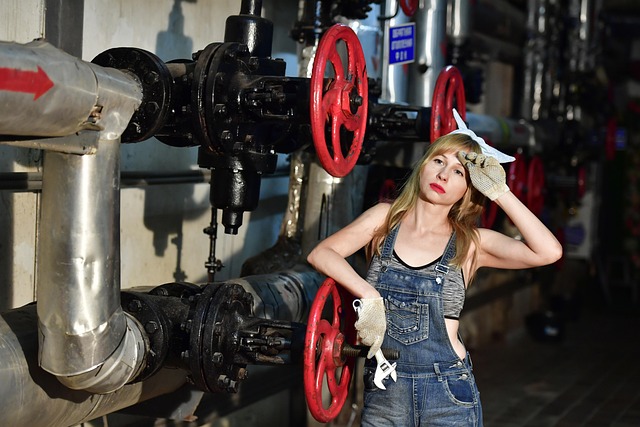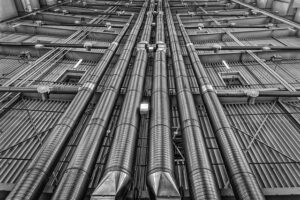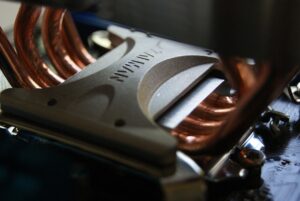Industrial destratification fans with integrated airflow sensors are crucial for optimizing air circulation in large spaces like manufacturing plants and warehouses, addressing thermal stratification. These advanced fans enhance worker comfort, reduce energy costs, and improve operational efficiency through precise control of ventilation systems. Real-time monitoring and adjustment of airflow patterns lead to efficient air distribution, making them indispensable for industrial facilities aiming to maximize energy cost reduction and create safer, more comfortable working environments.
“Industrial destratification fans, equipped with integrated airflow sensors, are transforming ventilation systems. This article delves into their multifaceted benefits, exploring how these sensors optimize performance and enhance control. From understanding the fundamental role of destratification fans to uncovering advanced optimization techniques, we provide valuable insights.
We present compelling case studies showcasing real-world applications, demonstrating improved energy efficiency and environmental control. Discover how modern industrial destratification fans, combined with sensor technology, are revolutionizing workplace environments.”
- Understanding Industrial Destratification Fans: Their Role and Benefits
- Integrating Airflow Sensors: Enhancing Efficiency and Control
- Optimizing Performance: Techniques and Strategies
- Case Studies: Real-World Applications and Results
Understanding Industrial Destratification Fans: Their Role and Benefits

Industrial destratification fans play a pivotal role in optimizing air circulation within large spaces, such as manufacturing plants and warehouses. These specialized fans are designed to combat thermal stratification, the natural tendency for hot and cold air to separate, creating uneven temperature distributions. By integrating powerful airflow sensors, modern industrial destratification fans offer advanced control over ventilation systems.
The benefits of employing these fans in industrial facilities are multifaceted. They significantly enhance worker comfort by ensuring a more uniform temperature across large ceiling spaces, typically found in factories or heavy-duty construction sites. Moreover, efficient air circulation can lead to substantial energy cost reduction for manufacturing plants and warehouse applications. Effective thermal stratification control not only improves overall operational efficiency but also contributes to a sustainable working environment.
Integrating Airflow Sensors: Enhancing Efficiency and Control

Integrating airflow sensors into industrial destratification fans offers a powerful solution for optimizing large space air circulation in various settings like manufacturing plants and warehouse applications. These high-tech sensors play a pivotal role in managing thermal stratification control, which is crucial for both energy cost reduction and worker comfort improvement in heavy duty construction and factory cooling scenarios. By constantly monitoring and adjusting airflow patterns, destratification fans with integrated sensors ensure efficient air distribution across vast, high ceiling spaces—a challenge often overlooked but critical for overall facility performance.
This advanced technology allows operators to precisely tune fan speeds and settings based on real-time data from the sensors. As a result, factories can achieve significant energy savings while maintaining optimal worker environments. The sensors’ ability to detect and respond to changes in air flow dynamics makes them indispensable for industrial facilities seeking to enhance operational efficiency, reduce energy consumption, and create safer, more comfortable working conditions in vast, complex spaces.
Optimizing Performance: Techniques and Strategies

Optimizing performance with industrial destratification fans involves a combination of advanced techniques and strategic deployment. By integrating airflow sensors, facilities can precisely monitor and control air movement across large spaces, ensuring optimal thermal stratification control. This data-driven approach allows for fine-tuning fan settings, maximizing energy efficiency and minimizing energy cost reduction.
For manufacturing plants, warehouses, and even heavy duty construction sites with high ceiling spaces, these fans play a pivotal role in factory cooling and worker comfort improvement. By enhancing large space air circulation, destratification fans help create a more comfortable and productive environment. This not only boosts employee morale but also increases operational efficiency, contributing to the overall success of industrial facilities.
Case Studies: Real-World Applications and Results

In various industrial facilities, manufacturing plants, and warehouse applications, industrial destratification fans with integrated airflow sensors have proven to be game-changers. These powerful tools are specifically designed for high ceiling spaces, offering effective factory cooling solutions that tackle the persistent issue of thermal stratification control. By continuously monitoring and adjusting air circulation, these fans significantly enhance worker comfort improvement while optimizing energy cost reduction.
Case studies from heavy duty construction sites and vast warehouse spaces have shown remarkable results. In one such instance, a leading manufacturing plant experienced a notable drop in energy consumption by 20% after installing destratification fans equipped with airflow sensors. The implementation also led to improved worker productivity and reduced downtime due to better-controlled environments. Similar success stories from warehouse applications underscore the versatility of these fans, demonstrating their ability to facilitate large space air circulation while ensuring optimal operational conditions in diverse industrial settings.
Industrial destratification fans with integrated airflow sensors have revolutionized workflow optimization. By understanding these fans’ key role in enhancing efficiency, temperature control, and air quality, organizations can harness their benefits fully. Integrating airflow sensors allows for precise monitoring and control, ensuring optimal performance. Various techniques and strategies, backed by real-world case studies, demonstrate the significant improvements these fans bring to industrial processes. Embracing this technology is a game-changer for businesses seeking to maximize productivity while minimizing energy costs.






